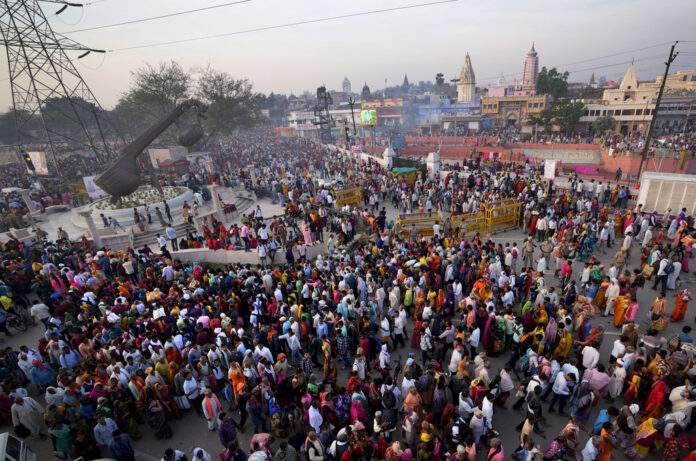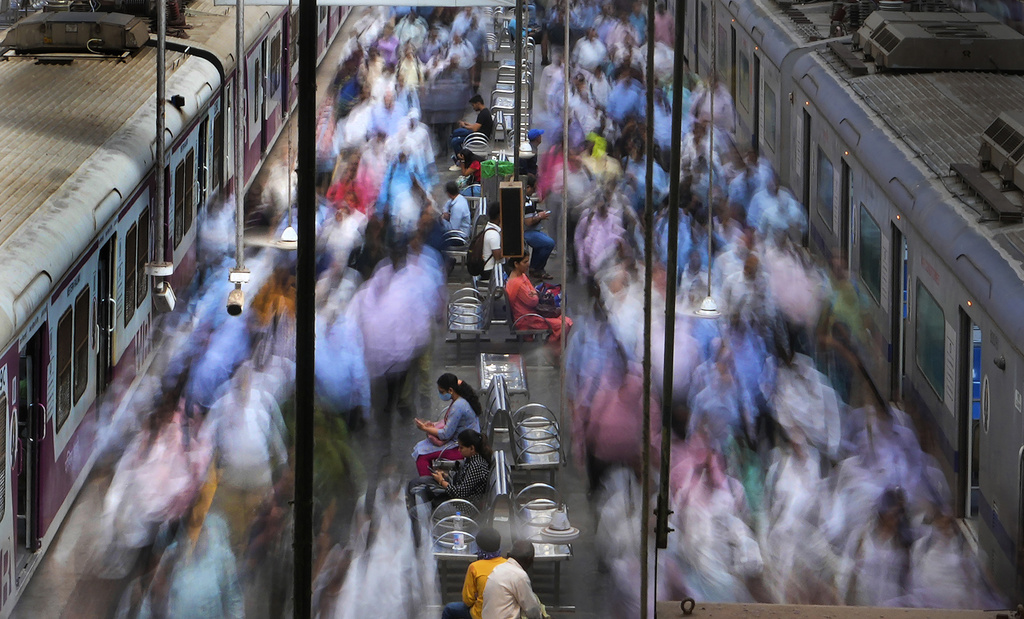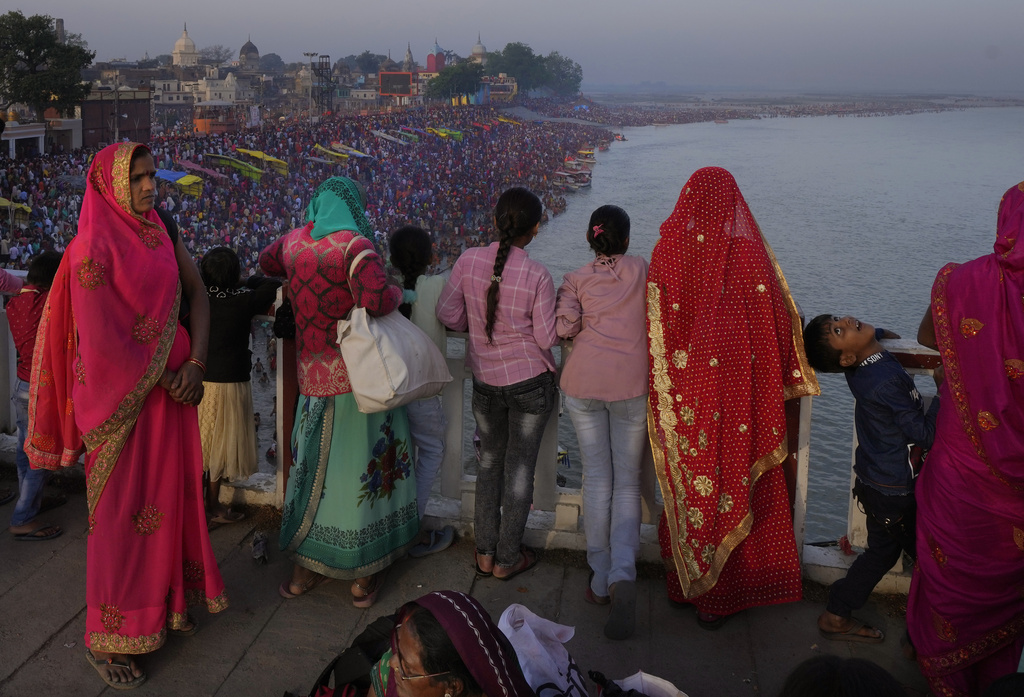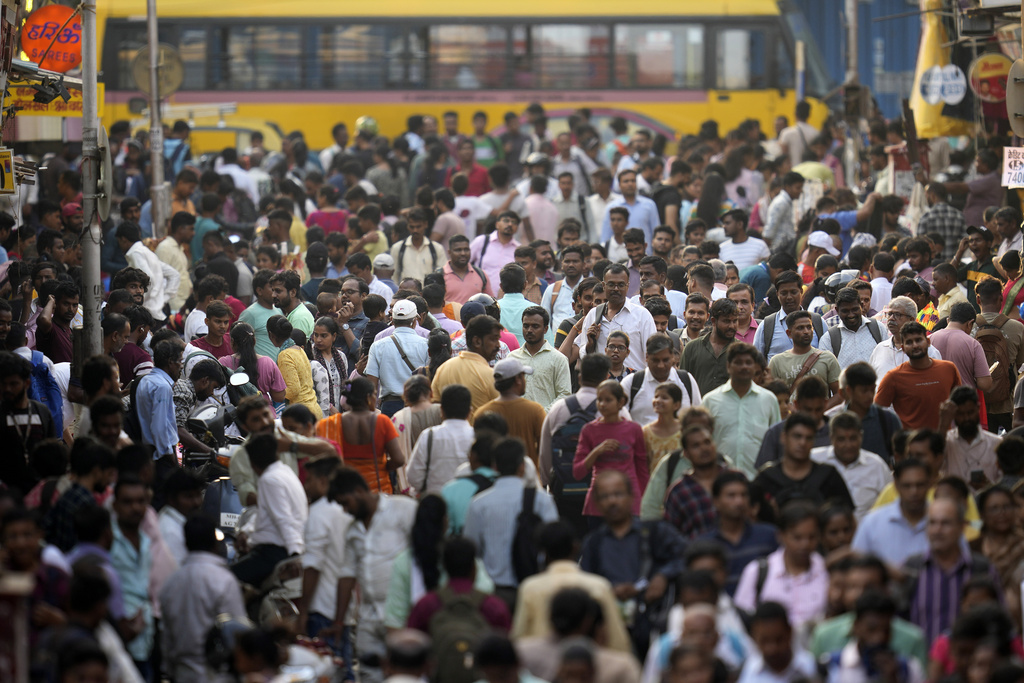
NEW DELHI (AP) — India will be the world’s most populous country by the end of this month, eclipsing an aging China, the United Nations said Monday. The milestone raises questions about whether India can repeat the economic success that has made China central to the world’s economy and a leading global power.
The news comes at a moment when India is promoting itself as a rising international player as the host of this year’s G20 Summit. It’s also becoming a more attractive destination for multinational companies seeking to reduce their reliance on China.

By the end of April, India’s population is expected to reach 1.425 billion, which means it will match and then surpass mainland China’s, the U.N.’s Department of Economic and Social Affairs said in a news release. The forecast is based on their latest estimates of global population.
It’s not clear exactly when India’s population will pass China’s. It may have already have done so. Demographers say the limits of population data make it impossible to calculate a date.
Another U.N. report last week projected that India would have 2.9 million people more than China by mid-year, but that was based on snapshots of the populations at the beginning of the year and the middle of the year. Monday’s announcement is based on an analysis that tried to estimate when the population crossover will take place.

The Indian government, which hasn’t done a census since 2011, has not officially commented on the estimates. The timing of when India surpasses China in population will likely be revised once India conducts its next census, John Wilmoth, director of the United Nations’ population division, said at a news conference at U.N. headquarters in New York.
“The precise timing of this crossover isn’t known, and it will never be known,” Wilmoth said. “There is uncertainty in the data.”
India and China are neighbors and have a complicated relationship, including robust trade ties and a long-running border dispute. The United States and its allies increasingly see India, the world’s largest democracy, as a counterweight to China.
But their interests don’t always align. India, unlike much of the West, has refrained from condemning its Cold War ally Russia over its war in Ukraine, instead adopting a neutral stance even as India’s purchases of Russian crude have soared.
Observers say India’s sheer size, and its young population, give it the potential to replicate China’s economic trajectory.
Young workers who flooded into China’s cities to take factory jobs starting in the 1990s were an essential ingredient in the boom that saw China become the world’s second-largest economy.
But China’s population peaked in 2022 and has since started to fall. By the close of the century, its population could drop below 1 billion, the U.N. said. The country’s elderly population is swelling while its birth rate is still plunging, from 1.7 babies per woman in 2017 to 1.2 in 2022, according to U.N. data.
By contrast, India has the world’s largest young population, a higher fertility rate, and has seen a consistent decrease in infant mortality. Experts caution against alarm about overpopulation, however, as the country’s fertility rate has been steadily falling, from over five births per woman in the 1960s, to two in 2022. India’s population is expected to stop growing and stabilize around 2064.
“The main driver is the levels of fertility in these two countries,” Wilmoth said.

Historic reforms in the 1990s spurred spectacular growth and India’s $3 trillion economy is the fifth-largest in the world today as its high-skilled sectors have soared.
But India’s economy is still far behind China’s. In 1970, the two countries had nearly equal per capita incomes, but today China’s gross domestic product is $12,556 per person, compared to India’s $2,256, according to 2021 World Bank data.
Economists warn that even as India’s GDP has surged, so has joblessness. About 80% of Indian workers still toil in informal jobs, which are often precarious, low paid, and offer little to no benefits. Still, India stands to benefit from what is referred to as a “demographic dividend,” when the swelling of the working-age population spurs rapid economic growth, provided there’s strong participation in the labor force, Wilmoth said.
India’s vast population also means that many challenges play out on a huge scale, whether it’s grappling with the growing threat of climate change, disparities between its urban and rural populations, a shrinking number of women in the workforce or a widening religious divide.
“For this century to belong to India, it must make the most of its demographic advantage,” said Brahma Chellaney, a professor of strategic affairs at the Centre for Policy Research. “China’s demographic crisis is timely for India’s growth — but only if it can find enough good quality employment for its teeming youth.”
___
KRUTIKA PATHI reported from New Delhi and JOE McDONALD reported from Beijing. AP writer Mike Schneider in Orlando, Florida, contributed to this report.
















































